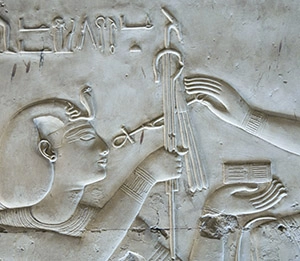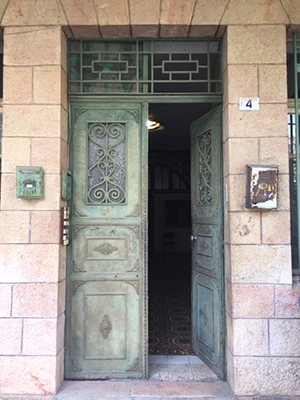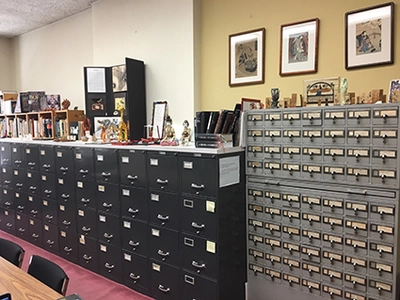ARAS Connections: Image and Archetype - 2021 Issue 3

The two papers in this edition of ARAS Connections underline something that I find myself thinking more and more about. When we are younger, the numinous power of archetypal images and emotions attract us like moths to light. As we grow older, we become more and more aware that the archetype is not enough or too much. What is most important is how we relate as individuals and as groups or cultures to the archetypal realm. It is not enough to be fascinated by the archetype. We need a relationship to it, not an identity with it. The two articles of this edition of ARAS Connections both exhibit a conscious relationship of the individual author to the archetypal realm. It is for this reason that they are so appealing.
Jacqueline Thurston begins her paper, Sacred Deities of Ancient Egpyt: Ferocity and the Feminine and Moon and Earth as Expressions of the Divine Masculine, with a narrative of her personal encounter with the archetypal images. It is Thurston’s individual encounter with the archetypal realities of the Egyptian Gods and Goddesses that makes all the difference in how we are able to take it in. Do we become possessed by the archetype or are we able to grow from and differentiate ourselves as individuals in our encounters with the archetype?
The same can be said of Henry Abramovitch’s The Healing Space of My Office: Analysis as Performance Art. What makes this paper so moving and meaningful to me is that Henry has found his own individual way of relating to the archetypes of healer and the temenos of a healing space. Henry is not possessed by the archetype. His office is an expression of a differentiated, human, personal relationship to the archetype. Again, that makes all the difference.
This edition of ARAS Connections celebrates making as conscious as possible the relationship between the individual and the archetype rather than inflating the individual with the archetypal.
Sacred Deities of Ancient Egypt: Ferocity and the Feminine & Moon and Earth as Expressions of the Divine Masculine

THERE ARE MEMORIES THAT WILL BECOME STORIES
I entered Luxor Temple, one among a jostling throng of tourists. Spontaneously, I glanced back over my shoulder. I was gobsmacked—there is no other word to describe the physical force of my experience—by the sight of a beautiful low relief carving in black stone of Seshat. Over her linen dress, the goddess wore the pelt of a leopard, a garment traditionally worn by sem priests who knew the sacred secrets necessary to prepare the deceased for burial. Seshat faces an inner wall. Her placement means she remains hidden and thus usually goes unseen. Only an accidental turn of the head at precisely the right moment reveals her presence.
Understand that in this moment of confrontation, I did not know her name. I did not know she was the mistress of all forms of writing, ranging from lists of captured slaves and bounty to sacred religious texts. I did not know that the precise meaning of Seshat’s enigmatic headdress remains unknown. Fully clothed in a linen dress, the claws of a leopard brushing against her arms and legs, counting the years of the reign of the pharaoh, graced by her mysterious emblem, Seshat launched me on a journey that would span a decade. Over time, my quest would culminate in a book titled Sacred Deities of Ancient Egypt. But Seshat was the beginning. Her intriguing symbolic fusion of instinctual, bestial energy combined with intellect and knowledge; her role as a guardian of texts both mundane and sacred; her enigmatic emblem; and her companion, Thoth, Lord of the Moon, sustained me as my creative pursuit grew from one year to many years. We had, I discovered, a reciprocal relationship. Seshat embodied aspects of myself that I simultaneously knew but did not know. Meeting her resembled a Mobius strip, a topographical phenomenon in which the surface moves seamlessly and continuously from the inside to the outside and from the outside to the inside.
Remember, I was an older woman in her late sixties to early seventies, drawn to Egypt initially on a lark. I did not imagine I would become a solo traveler in a culture where I was an outlier. I did not envision sitting on the ground after sunrise with a stonemason and his crew, drinking tea with sugar in small glass cups while eating ful medames, a traditional concoction of fava beans, at breakfast before climbing a wall of scaffolds to see their restoration situated at the very top of one of the temple walls. I did not envision standing in awe in Hathor’s temple at Dendera in the aftermath of the Egyptian revolution of January 2011. The temple was empty, mercifully devoid of tourists. It had become a silent sanctuary filled with echoes of the past. It is my hope that as you read this written reflection, you may also find yourself inexplicably, even deeply, drawn to the figures or mythos of one of the gods or goddesses of ancient Egypt. May you also experience the uncanny moment in which the kohl-lined eyes of a deity spring fleetingly to life and you feel seen, known, recognized.
Read Sacred Deities of Ancient Egypt: Ferocity and the Feminine & Moon and Earth as Expressions of the Divine Masculine in its entirety here.
The Healing Space of my Office: Analysis as Performance Art

Need for a New Paradigm: Analysis as Performance Art
Most discussions of the analytic process focus on a number of key topics: the importance of the therapeutic relationship; making the unconscious, conscious, especially through dreams; the transference-countertransference matrix; the process of individuation and other theoretical formulations basic to analysis. While I believe understanding the therapeutic process is important, so, too, I believe, is the effect of the concrete therapeutic space, the office in which healing takes place (Abramovitch 1997, 2002, 2015, 2020a). I believe a paradigm shift is needed to conceptualize analysis as a special form of dramatic performance art, in which the focus is more on what we actually do and less on how we understand it. Looking at psychotherapy as a performance art allows one to focus on often neglected aspects of the therapeutic situation. Instead of moving from theory to clinical example, the emphasis would be on the dramatic aspects: entrances and exits, when to speak and when to stay silent, giving the same interpretation in ten different ways, being simultaneously the actor and the audience, but above all, being masters at improvisation. Thinking of analysis as a kind of performance art places a spotlight on the therapeutic space as a stage setting. We know the power of healing places from pilgrimages, dream incubation rituals, voyages into nature and other numinous sites (Abramovitch 2021). Likewise, I argue that how an analyst’s office is decorated is inherently part of the healing process; a badly arranged space can undermine it. Greater attention is needed by our healing spaces.
In this article, I want to examine my own therapeutic space, against the background of the offices of Freud and Jung and the work of Mark Gerald (2019), a psychoanalyst-photographer who photographed hundreds of the offices of psychoanalysts. I will describe not only the interior room where the actual healing dialogue occurs, but also the “approaches”, the transitional spaces that patients walk through en route to the office.
Temenos Lost
I first became aware of the importance of my office space as an integral part of a healing process when I first moved there. I went from a small cozy room in my apartment, to a large sunny office in a distinctive ‘Jerusalem style’ building complete with high ceilings, enormous bay windows, and beautiful ceramic floor tiles. (Abramovitch 1997).
I wanted to provide a feeling of continuity for patients by recreating in the new space as much as possible the ‘feel’ of the previous one. But my chairs, table and rug, which had filled the old space, took up only a corner of the now much larger room.
Read The Healing Space of my Office: Analysis as Performance Art in its entirety here.
ARAS New York Reopening to the Public

The ARAS Archive in New York City will reopen BY APPOINTMENT ONLY to fully vaccinated individuals on Tuesdays from 11am – 5pm EST starting October 5th, 2021. If you would like to make an appointment, please contact us at arasarchivek@gmail.com.
We look forward to seeing you again at the Archive!
Contents
Become a Member of ARAS!
Become a member of ARAS Online and you'll receive free, unlimited use of the entire archive of 17,000 images and 20,000 pages of commentary any time you wish—at home, in your office, or wherever you take your computer.
The entire contents of three magnificent ARAS books: An Encyclopedia of Archetypal Symbolism, The Body and The Book of Symbols are included in the archive. These books cost $330 when purchased on their own.
You can join ARAS Online instantly and search the archive immediately. If you have questions, please call (212) 697-3480 or email info@aras.org
We Value Your Ideas
As our newsletter grows to cover both the ARAS archive and the broad world of art and psyche, we're eager to have your suggestions and thoughts on how to improve it. Please send your comments to info@aras.org. We look forward to your input and will reply to every message.
Subscribe
If you're not already a subscriber and would like to receive subsequent issues of this newsletter by email at no cost, e-mail us at newsletter@aras.org.
